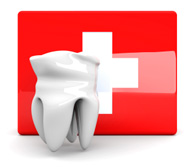Just last week, a patient came to my dental office and said “My tooth hurts”. I said “Which one”? He said “My lower left back tooth”.
After a thorough dental exam, I concluded it was in fact his upper left molar tooth. The patient had a hard time accepting this, because he was so sure his toothache pain was coming from the bottom.
This happens very often in dentistry and it is called Referred Pain. The toothache pain has a way of traveling from the top to the bottom arch and vice-versa and can even feel as if the ear is involved. However, the pain doesn’t cross over to the other side of the mouth, i.e., left to right…it stays on the same side.
Please note: It is only the sensation of pain that feels like it’s travelling…not the infection itself!
By taking an x ray and doing a thorough clinical exam, it is possible to isolate the tooth – or toothache – that is causing the pain in question. Most of the time it is pretty obvious which tooth is causing the problem. For instance, an x ray may show a huge cavity. At other times it is not as obvious; there is no big cavity or infection that ‘screams’ out at you. This is where a little investigative dentistry comes in. By tapping on the tooth and checking its sensitivity to hot and cold, we soon narrow it down.
The Tooth, The Whole Tooth and Nothing but The Tooth
Once we find the problematic tooth in question, the dental treatment usually begins with a course of antibiotics and, if necessary, medication to reduce the pain in the tooth.
If the cause of pain is a toothache, then the nerve has most probably become infected. If we try to freeze (or numb) an infected tooth, the tooth usually doesn’t freeze well. The strategy is to calm the tooth down first with antibiotics and then bring the patient back and start to work on it, thus alleviating the tooth pain. It takes about 24 hours for an antibiotic to get into your system if it is taken orally.
To be on the safe side, I therefore wait a few days before attempting to work on the tooth.
In the next entry, we’ll look at the role an antibiotic plays in the healing process of an infected tooth…until then.
Are you experiencing pain in your teeth? Does your tooth ache? Does it hurt when you bite chew? Are your teeth sensitive to hot or cold? If you answered ‘yes’ to any of these, you may have a cavity or tooth abcess. For treatment of cavities and to learn about preventing them, give our dental clinic in Brampton a call at (905) 791-3867 today. You’ll be glad you did!
About Dr. F. Keshavarz Dentistry
You will find our dentists and dental hygienists to be friendly, gentle, safe and accommodating and diverse in nature. Our staff takes the time to make each person feel comfortable and treated with exceptional care.







